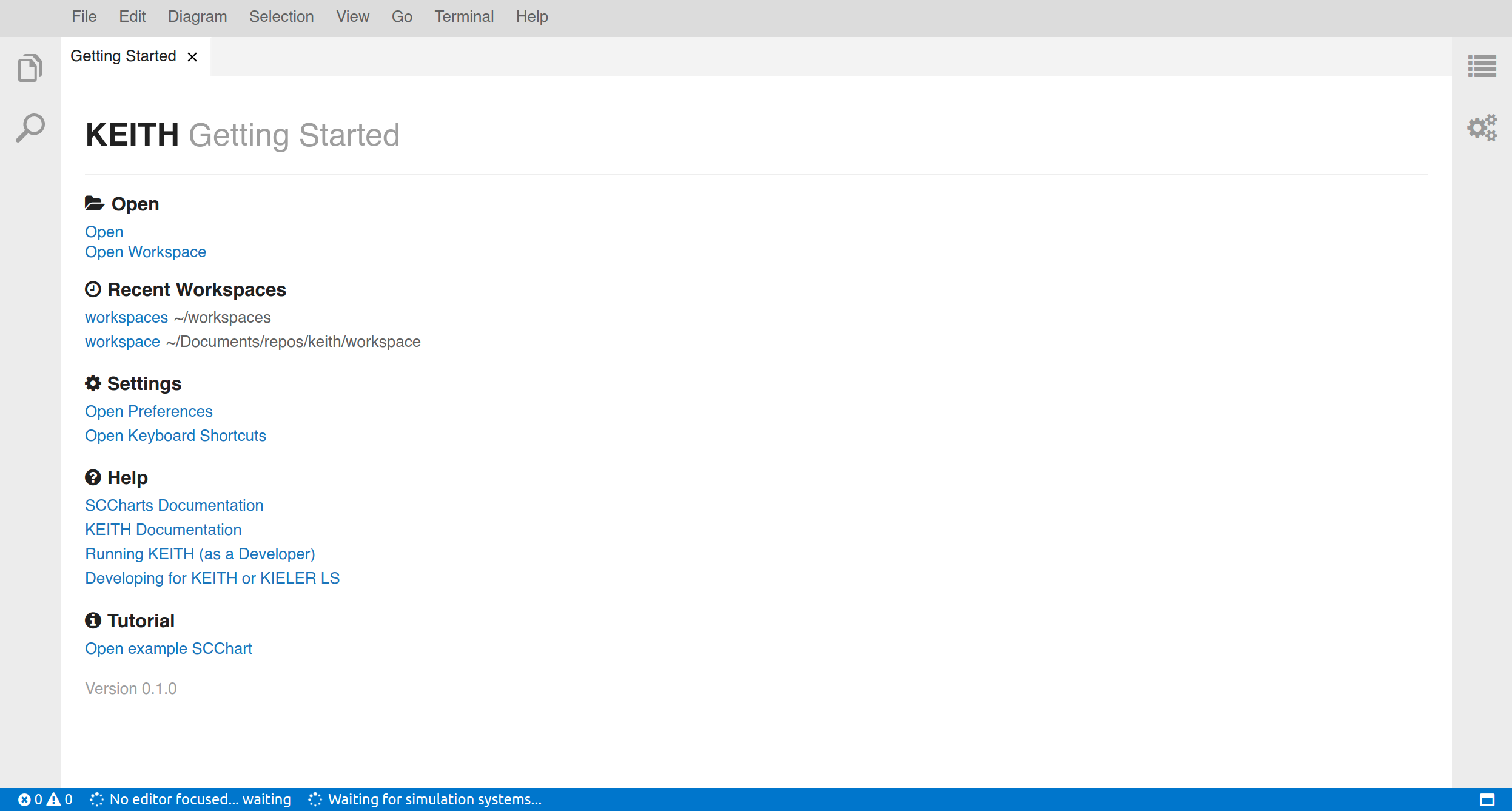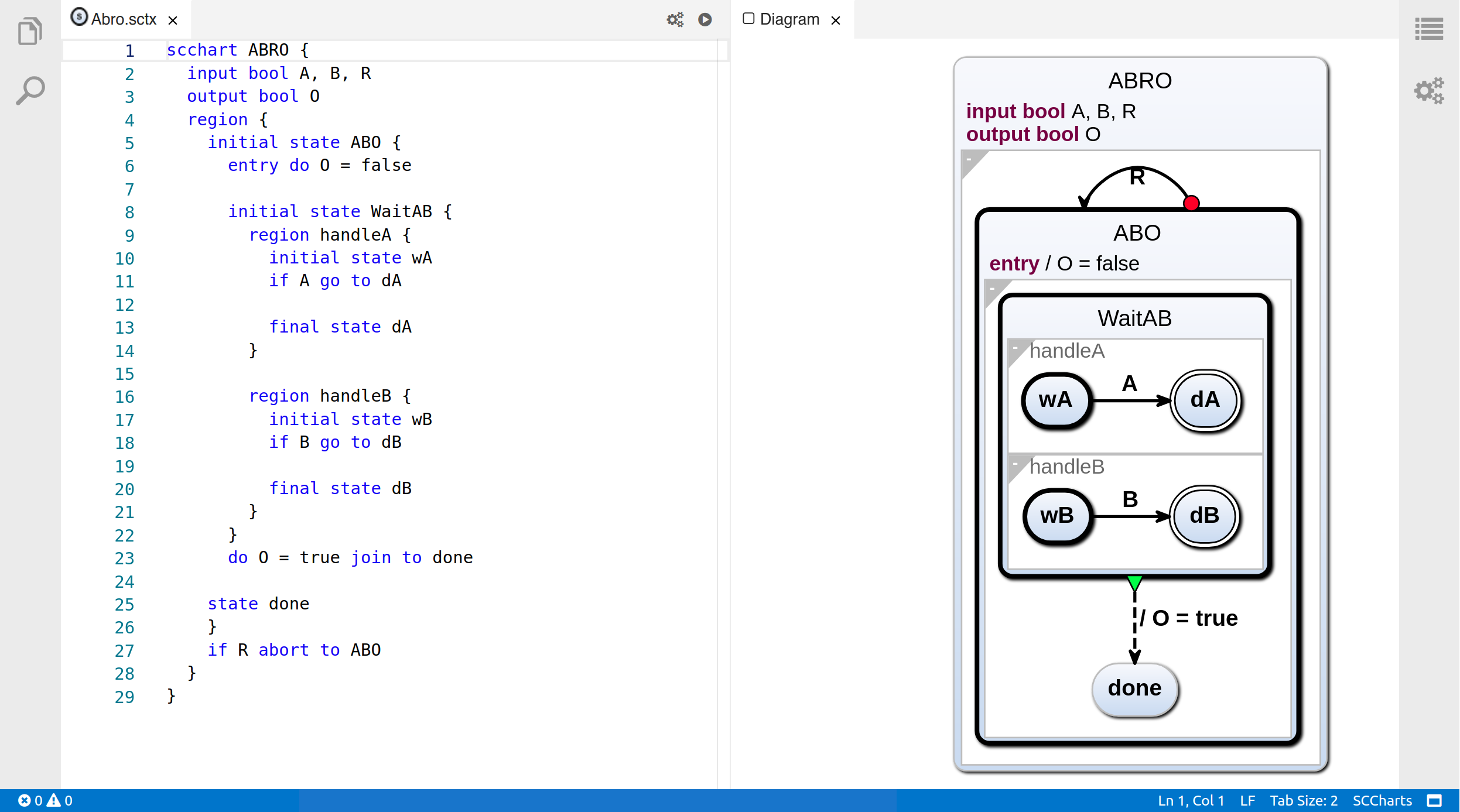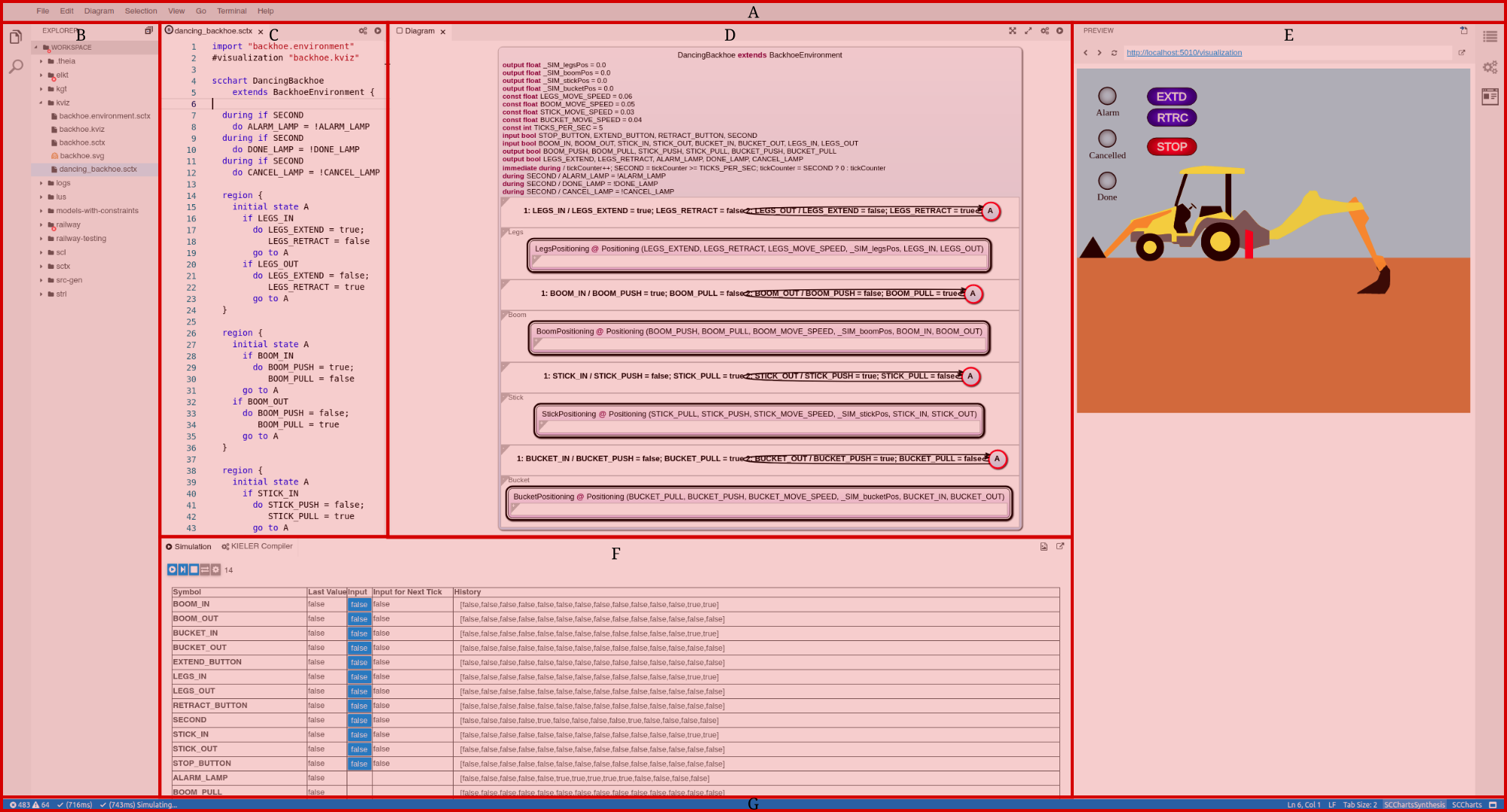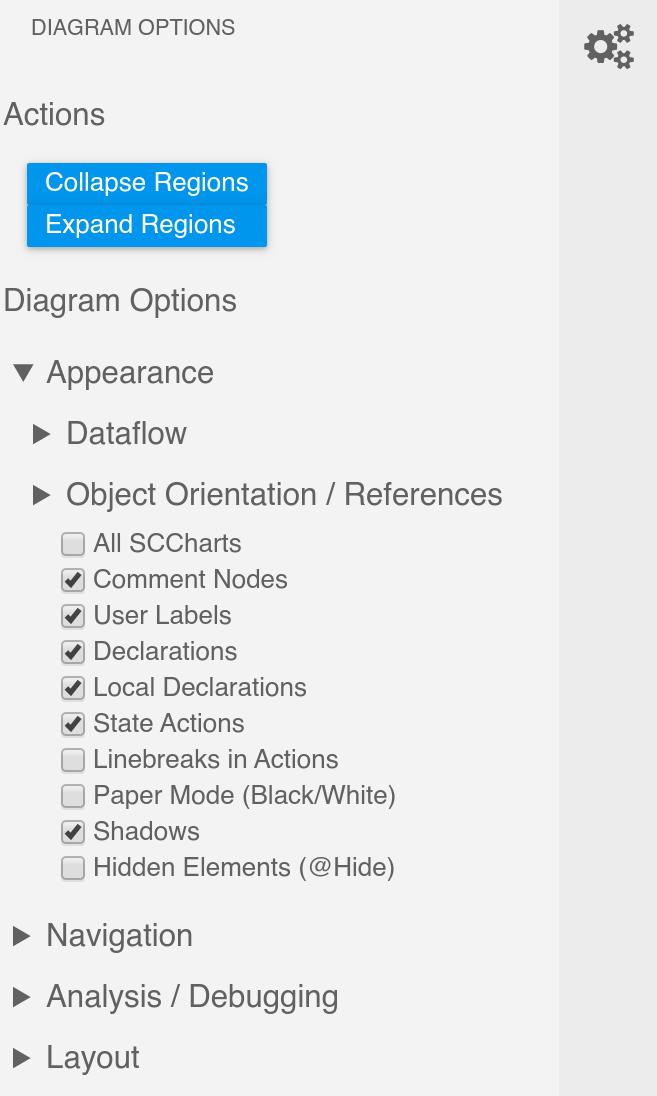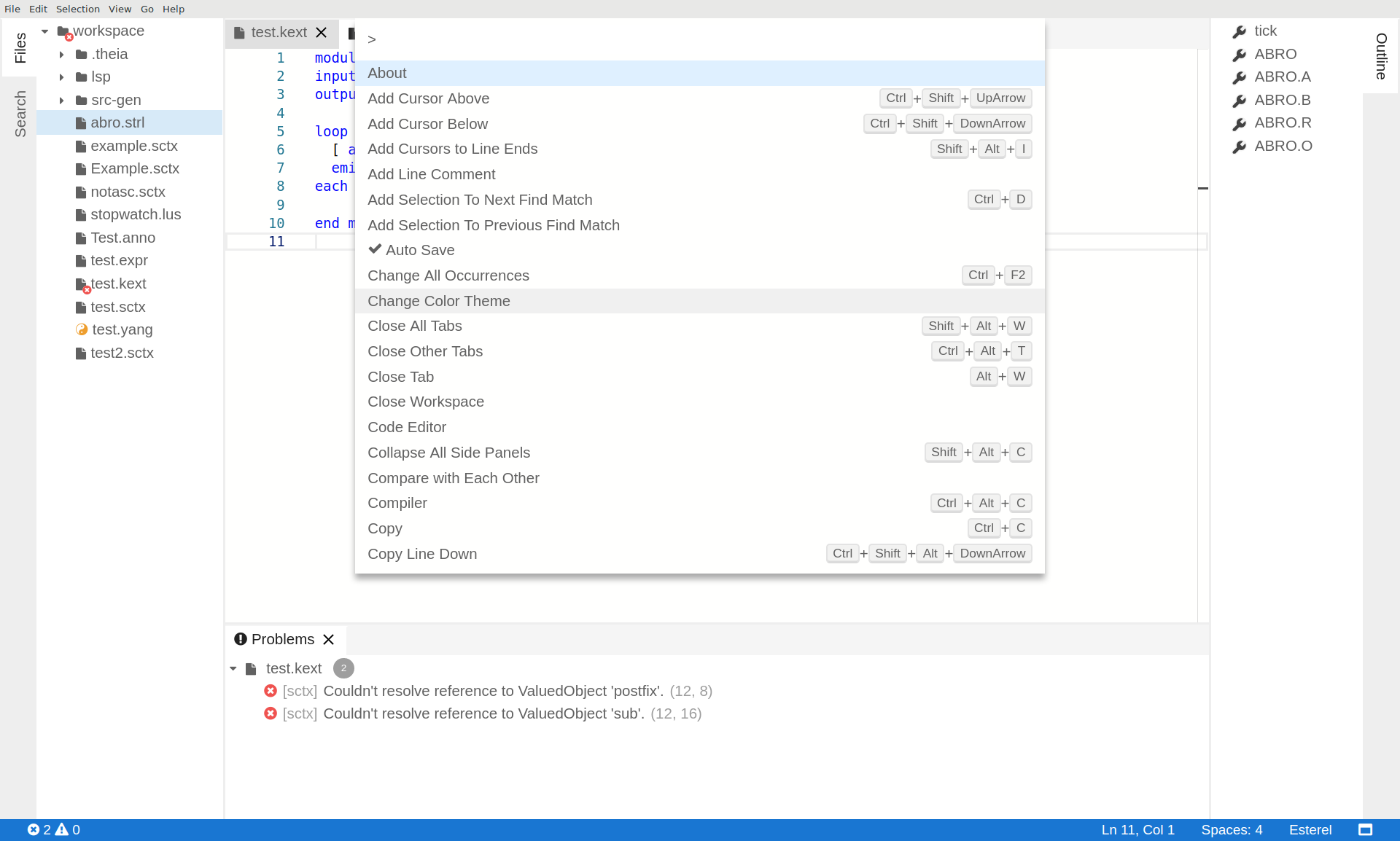KEITH[1][2] is an IDE for Model -Driven Development (MDE) based on KIELER[3]. It uses KIELER as a language server (LS) to provide rich client features for SCCharts[4], Lustre, Esterel, ELK, KGraph, and some intermediary languages.
KEITH runs in a browser. You can either start KEITH and connect to an URL (i.e. localhost:3000) via a browser (this will henceforth be called the browser version of KEITH), or start an electron app with a browser that runs KEITH inside (henceforth called the electron version of KEITH). Since the electron app might use a different chromium browser some UI elements might be displayed differently, but both version work the same. The electron version is bundled via the electron-builder framework to build an appimage or an archive into the henceforth called product. Both version have two alternatives to connect to the language server (LS). KEITH can connect to the LS via a socket. This is the only way to debug the LS. In the product KEITH connects to the LS via stdio/out and has to know the relative path to the LS application.
General Usage Philosophy
KEITH is developed via the Theia framework that is based on VSCode. It should be designed to integrate in the look and feel of VSCode. The user should be able to use this tool without clicking buttons in extensive dialogs as it can be the case in Eclipse. Since KIELER is an Eclipse application KEITH should not only focus on adapting everything that is already in KIELER and bring it to another platform but focus on the main features and make them easier accessible and minimize the clutter created via extensive button landscapes and dialogs.
Developing and designing the UI via web technologies promises to make it easier to design user interfaces with Human-computer interaction (HCI) in mind. The KIELER-LS for KEITH requires to separate UI and functionality also in KIELER and allows to develop a KEITH client with less dependencies to language specific implementations and promises are more modular framework. Moreover, the resulting LS could be used to adopt SCCharts toolchain for different IDEs.
As mentioned before, KEITH is able to run in your browser. However, the backend of KEITH and the language must not run on your system. One goal of KEITH is to use it as an online Editor such as JSFiddle for JS and use tools such as Gitpod which uses the kubernetes framework to manage dockerized workspace and IDE instances. This project is currently work in progress.
Normally the browser version is used for debugging and the electron version is delivered as download, but both work the same and you can also use the developer tools inside the electron version to debug the application.
You can download the nightly build for the KEITH electron app and the language server here (currently no working build for MacOS).
Downloads
KEITH Nightly: https://rtsys.informatik.uni-kiel.de/~kieler/files/nightly/sccharts-integration/
KEITH Language Server: https://rtsys.informatik.uni-kiel.de/~kieler/files/nightly/sccharts-integration/
[1] Sören Domrös. Moving Model-Driven Engineering from Eclipse to Web Technologies, November 2018
[2] Niklas Rentz. Moving Transient Views from Eclipse to Web Technologies, November 2018
[3] Reinhard von Hanxleden, Hauke Fuhrmann, and Miro Spönemann. “KIELER—The KIELIntegrated Environment for Layout Eclipse Rich Client”. In:Proceedings of the Design,Automation and Test in Europe University Booth (DATE ’11). Grenoble, France, 2011.
[4] Reinhard von Hanxleden, Björn Duderstadt, Christian Motika, Steven Smyth, Michael Mendler, Joaquín Aguado, Stephen Mercer, and Owen O’Brien. SCCharts: Sequentially Constructive Statecharts for Safety-Critical Applications. In Proc. ACM SIGPLAN Conference on Programming Language Design and Implementation (PLDI’14), Edinburgh, UK, June 2014.
Using KEITH
KIELER compiler widget
The compiler widget shows all snapshots created via the model to model transformations of the currently model. These buttons are clickable and send a request to the LS to draw the clicked snapshot in the diagram view. Snapshots are labeled according to their processor label. Snapshots without labels are models of the previous processor.
This widget is only used for displaying these snapshots. All compilation features can be sued via the tab bar of the editor or diagram widget or via the command palette.
Hint
You can navigate through the snapshots via Alt+G/Alt+J
Diagram-option widget
The diagram option widget allows to set the diargam options for the currently shown diagram.
On change of the diagram model it updates the options of the diagram via the LSP. The options seen here are SCCharts options.
The command palette
The command palette opens by pressing F1 or opening it via the menu View>Find Command...
On open it first displays the recently used commands and after that all commands in lexicographic order. The command palette can be searched via fuzzy search and supports regular expressions. The displayed commands have of a name (on the left side) and optionally a shortcut to invoke them (on the right side of the command palette). Some commands, such as Auto Save also have an icon associated to them.
Via Ctrl+P the workspace can be searched for files to open. This can also be access via F1 and deleting the > character in the command palette.
Modeling SCCharts
See Quick Start Guide#ModelingSCCharts for details.
Known Problems
Mac
If the app does not start open it via the terminal with
./keith.app/Contents/MacOS/keith
